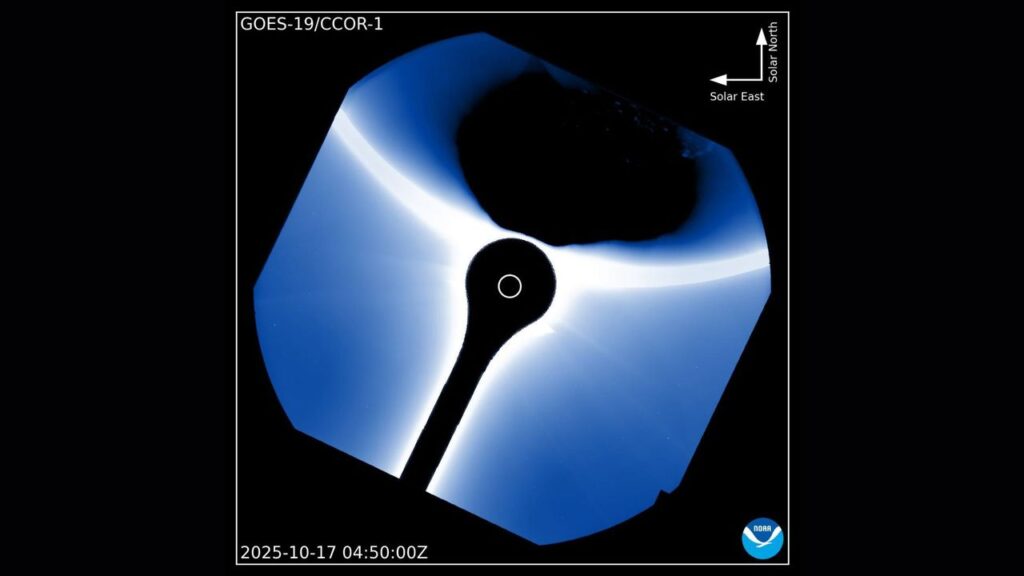
A recent satellite image captured by the U.S. National Oceanic and Atmospheric Administration’s (NOAA) weather satellite, GOES-19, showcased an unexpected sight: Earth itself, momentarily appearing as a silhouette against the sun’s solar corona. This remarkable image, shared by NOAA’s Space Weather Prediction Center on October 23, 2025, highlights the satellite’s advanced capabilities and the intricate dynamics of our solar system.
GOES-19, launched in 2024 and declared operational in early 2025, is part of NOAA’s Geostationary Operational Environmental Satellite series. Positioned approximately 22,000 miles (or 36,000 kilometers) above Earth’s equator, the satellite remains in geostationary orbit, allowing it to maintain a constant position relative to the planet’s surface. This unique positioning enables continuous monitoring of both weather patterns and the surrounding space environment.
The stunning image was taken using CCOR-1, or Compact Coronagraph 1, which is designed to capture real-time visuals of the sun’s outer atmosphere, known as the corona. This region, typically invisible to the naked eye, emits a faint glow and extends millions of miles into space. It is also the origin of coronal mass ejections (CMEs), which can release vast quantities of plasma and magnetic fields into the solar system, occasionally impacting Earth and disrupting satellites, power grids, and communication networks.
While the photograph may resemble a whimsical “space selfie,” it serves a vital scientific purpose. The appearance of Earth in the image demonstrates that CCOR-1 is functioning as intended, effectively capturing subtle solar structures even in the presence of a bright object like our planet. This incident also offers an important calibration test, allowing scientists to analyze how CCOR-1 manages stray light, reflections, and brightness contrasts among celestial bodies.
The ability to observe and study these phenomena not only enriches our understanding of solar dynamics but also enhances the effectiveness of weather forecasting and space weather prediction. The data gathered from GOES-19 and its instruments like CCOR-1 will help improve preparedness for potential disruptions that solar events can cause on Earth.
For those interested in further exploring the functions of coronagraphs and weather satellites, additional information is available through NOAA’s resources. As technology continues to advance, the insights gained from such satellite missions will play a crucial role in safeguarding Earth from the unpredictable nature of space weather.







